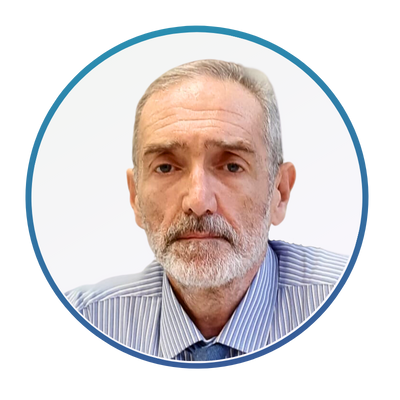
Prof. Emanuele Angelucci, MD
Transplant Program Director, CIC 217
San Martino Polyclinic Hospital,
Genoa, Italy
"EBMT and the haemoglobinopathies Working Party (WP) should (and will) have an important role supporting and enabling innovative approaches that can contribute to major advances in cellular and gene therapies in hemoglobin diseases.
The close collaboration between the WPs with clinical centres, laboratory facilities, founding agencies, pharmas and haemoglobinopathies doctors and associations must be instrumental to continuing improving available and new therapies and to optimize treatment for our patients.
I am fully committed to working to strengthen the existing collaborations, promoting new ones and delivering excellence in patient care, education, and research."
My Manifesto
EBMT finally announced the establishment of a new working party dedicated to haemoglobinopathies (namely transfusion dependent thalassemia and sickle cell disease). Transplantation in haemoglobinopathies started as a pioneering activity in the ‘80 and has been later recognized as a cornerstone of haematopoietic cell transplantation development. Today, new promising cellular therapy approaches are emerging as potential curative options for these patients. This new working party can have a fundamental role in developing new analyses and comparative studies and, possibly, a comprehensive treatment algorithm for these patients.
Transplantation in haemoglobinopathies raises questions that are in several aspects different from transplantation in malignancies, requiring a dedicated approach. Transplantation is a cell replacement therapy and not immunotherapy, therefore graft-versus-leukemia effect is not required and transplant related mortally is related to the combination of conditioning toxicity and iron toxicity accumulated during the years of transfusion-dependency. Most important, the risk benefit ratio is peculiar for these diseases, where a prolonged survival is today achievable with modern transfusions, erythropoiesis stimulating agents and iron chelation. For these reasons, development of transplantation and cellular therapy must be conducted in close collaboration with thalassemia and sickle cell disease doctors, their scientific association and patients, providing specific and dedicated scientific behaviour. Consequently, this working party must, in my opinion, be as complete, engaging and multidisciplinary as possible, including others working parties, doctors and researchers in the field of haemoglobinopathies, transplantation and cell therapy.
Moreover, it has been already demonstrated that today the most active transplant centres in hemoglobin disorders are outside Western Europe (mainly in the Mediterranean area), a continuous concrete and active involvement of these colleagues is of utmost importance.
Being a new working party, there are many new challenges to be faced. But, as often happens, challenges mean opportunities for collaboration, innovations and advances. Different subcommittees can be set up to answer the several questions that may arise from the problems faced every day by clinicians and investigators. These may include (but only as examples): dedicated database, long term follows-up, adult patients, endocrine and sexual development in paediatric patients, maternity/paternity, quality of life, recovery from pre-existing organs/tissues damage, cancer risk both after transplantation and cell therapy, cost issues, resources allocation, mixed chimerism in not malignant diseases and everything that can emerge from a broad and open vision of the working party, in collaboration with the other EBMT WP and disease-related societies.
I currently work as Transplant Program Director at San Martino Hospital in Genoa, Italy, a leader centre in cell and gene therapy. Furthermore, my motivation for this candidature derives also from several years of personal involvement dedicated to haemoglobinopathies and transplantation in haemoglobinopathies.
- I have been involved in this area since many years, having personally participated in over a thousand transplants in thalassemia (publications in New Engl J Med; Lancet; BLOOD, Ann Inter Med and others including the first EBMT report on transplantation in Thalassemia - BMT 2016). I have been involved in the development of the first PROMISE database for haemoglobinopathies.
- I contributed to develop and disseminate the guidelines for chelation therapy in thalassemia (Haematologica 2008), the EBMT guidelines for transplantation in haemoglobinopathies (Haematologica 2014), the handbook of the Thalassemia International Federation (TIF) and the SITE work on patient selection for gene therapy (Hemaphere 2021)
- I chaired the data monitoring committee of the Gene Therapy protocols of the San Raffaele hospital, the luspatercept protocols in thalassemia and the gene editing protocols now underway both in thalassemia and in sickle cell disease.
If elected as WP chair, I will continue to devote my expertise and commitment to the EBMT and the community. We are in an era where patients with haemoglobinopathies finally have different therapeutic options and the establishment of transplant/cellular therapies registries connected to pathology registries becomes important to give to the appropriate patient the best therapy at the most appropriate time. Also, I will do my best to working with the national and international Societies for the Study of Haemoglobinopathies in developing studies, providing a high level of education and ensuring close collaboration with funding agencies, pharmaceutical industry, patients association and clinical centres.
I would be honoured to receive your support.
Note: Voting for the EBMT Elections opens on 11 April. Principal Investigators (PI's) from active EBMT member centres will be able to cast their vote online for their preferred candidate within the open positions. The elections results will be announced live at the General Assembly Meeting on 25 April, during the 49th Annual Meeting of the EBMT. Instructions on how to vote will be sent out to PI's closer to the voting start date.